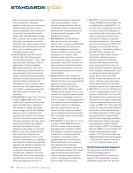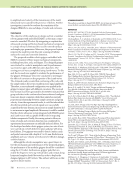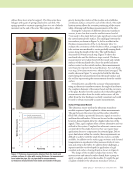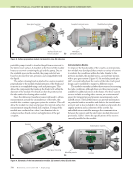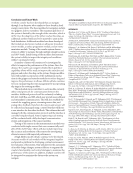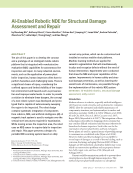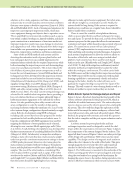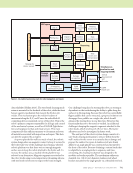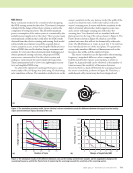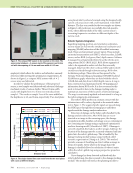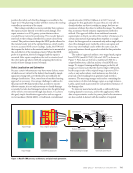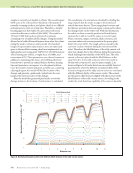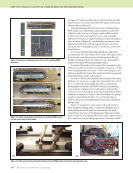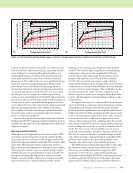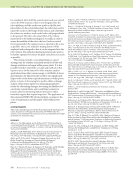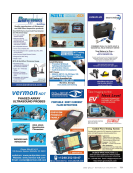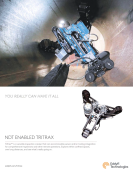718 M A T E R I A L S E V A L U A T I O N • J U L Y 2 0 2 1 of a different size is to be evaluated is a cumbersome process. Instead, it is much simpler and efficient to replace friction pads when they wear off. The thickness of the friction pad between the tube contact surface and EMAT sensor was mini- mized (less than 1 mm) for effective NDT. The gripper consisted of three major components (Figure 2): l Base plate: The base plate is a circular disc-shaped component designed to accommodate the arch and motors. It also acts as a connecting point between the gripper and the rest of the body of the LTI robot or any robotic arm’s end- effector through the robotic arm mount. The base plate consists of mounting provisions for two smart servo motors and the arch. However, only one motor is required for gripper finger actuation and the other is used for the LTI robot. l Arch: The arch is split into two halves. The bottom half is connected to the base plate using six 8-32 flathead screws. The bottom half and base plate combination act as a sturdy base for the gripper construction. The top and bottom halves of the arch are connected to each other using six M6 bolts and nuts. These are designed to hold minor components, such as bearings, shafts for finger actuation, and worm wheels. l Fingers: The fingers are the primary contact points for sensing. The gripper consists of two pairs of fingers, and each pair is connected to two separate shafts actuated by the same motor. Each finger consists of an EMAT sensor, friction pads, and other sensor provisions. The contact surface of the finger is designed to be flat, similar to the gripping curvature on friction pads. These parts were fabricated by 3D printing using a fiberglass-reinforced composite base material. Although our initial intention was to design this gripper for LTI robots, its modular characteristics enable its use in different robotic platforms. In this study, we focused on the evaluation of the gripper using the robotic arm platform. ME TECHNICAL PAPER w modular robotic gripper for tubular components A A ∅130 mm ∅130 mm 68 mm 80 mm 43 mm 60.79 mm 18 mm 16 mm 70 mm 20.53 mm 28.32 mm 5.08 mm 20 mm 60 mm Gripper finger Friction pads Gripper base plate Worm gear Extrusion for EMAT sensor Arch Worm wheels Section A-A Smart servo motor Figure 2. Two-dimensional view of the gripper design: (a) front view (b) side view (c) cross-sectional view. (a) (c) (b) 5 mm
J U L Y 2 0 2 1 • M A T E R I A L S E V A L U A T I O N 719 Because the gripper mount is modular, it can be easily detached from the gripper and its design can be changed depending on the robotic arm. We used a robot manipulator to evaluate the performance of the gripper in inspecting tubular components using EMATs. The gripper was attached to the mount using six 8-32 flathead screws, as illustrated in Figure 3. The mount was then screwed onto the manipulator end-effector using four M6 screws. This allows designers to position the gripper onto any part of the tube. A representa- tion of the gripper operation along with the robotic arm is shown in Figure 4. Power Train and Load Characteristics The power train was designed to meet the torque and load requirements of the LTI robot. The weight of the LTI robot was estimated to be 7 kg and a single gripper is expected to hold on to the pipe with a force (applied to the fingers) greater than the robot weight. Therefore, assuming the load applied at the tip of a 70 mm long finger to be 7 kg (#68.67 N), the torque required on the finger shaft is #4.8 N·m. As there are four fingers, a total torque of 9.6 N·m is required for each shaft and a torque of 19.2 N·m is required for the two shafts combined. However, to achieve a minimum factor of safety (FoS) of 4, a torque of #76 N·m is required. To achieve this high torque level, a smart servo motor (8.4 N·m) was used as the source with a worm-gear conversion ratio of 1:10, which in turn resulted in a torque of 84 N·m (#4.375 FoS). Based on load calculations, static finite element analysis (FEA) was carried out using a modeling software for the finger to determine material strength and deformation. The FEA results suggested an FoS of 7, which makes the design safe for the applied load and selected material. Control of the Gripper Gripper fingers were connected to a smart servo motor using a worm and spur gear combination. These smart servo motors are all-in-one actuator systems with a servo mechanism that can precisely control the angular or linear position, velocity, and acceleration of the output shaft. The electric motor in the servo motor was controlled by an internal microcontroller unit with a simple proportional-integral-derivative (PID) control loop taking the velocity, position, torque, load, temperature, and voltage as feedback to improve control over the motor. EMAT Systems Using EMATs is a promising UT technique for the nonde- structive evaluation of electrically conductive materials. Although the signal-to-noise ratio (SNR) in EMAT systems is inherently weak, high amplification, filtering, and narrow- band excitation can be used to enhance the SNR (Mirkhani et al. 2004). Despite some of their limitations, including a low efficiency, liftoff sensitivity, and limited frequency range, EMATs have the advantage of not requiring any couplants for Mount Robotic arm M6 screw Figure 3. Manipulator mount for the robotic gripper. Robotic arm Tube Robotic gripper Figure 4. Demonstration of the grasping of a tube by the robotic gripper.
ASNT grants non-exclusive, non-transferable license of this material to . All rights reserved. © ASNT 2025. To report unauthorized use, contact: customersupport@asnt.org



























































